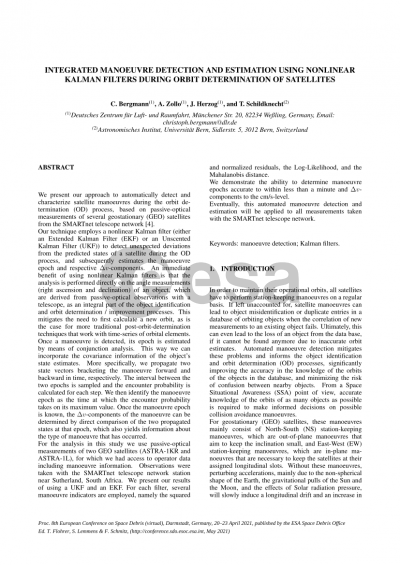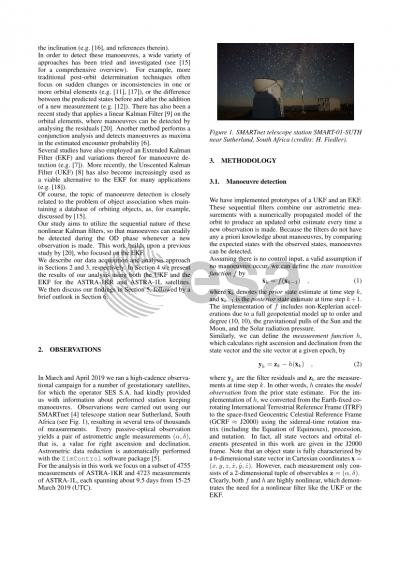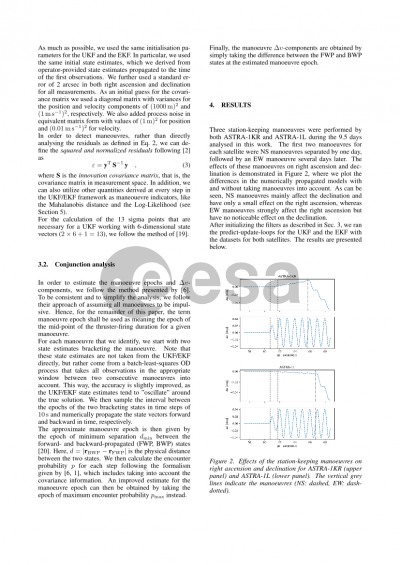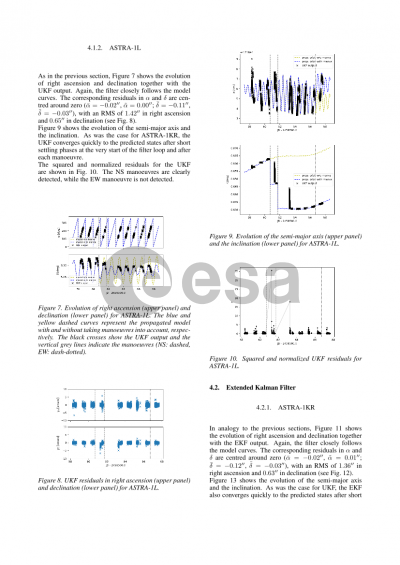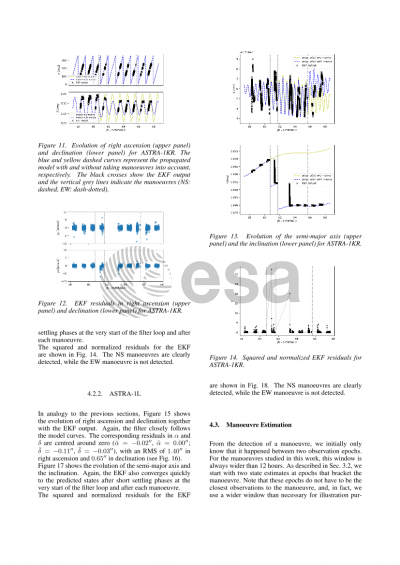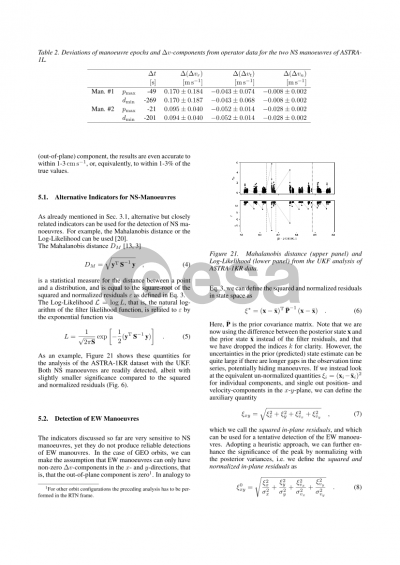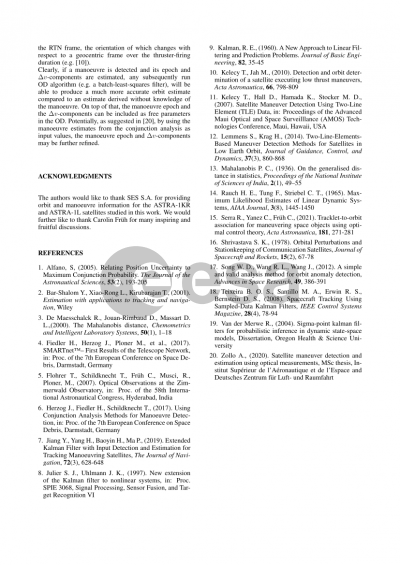Document details

Abstract
We present a novel approach to automatically detect and characterize satellite manoeuvres during the orbit determination process, based on optical measurements of several GEO satellites from the SMARTnet™ telescope network.
In order to maintain their operational orbits, satellites have to perform station-keeping manoeuvres on a regular basis. If left unaccounted for, satellite manoeuvres can result in duplicate entries of a given object in a data base when the correlation of new measurements to an existing object fails, or even lead to the confusion of nearby objects with each other. Knowing about satellite manoeuvres on the other hand informs the object identification and orbit determination processes, significantly improving the accuracy of the orbital elements in the data base, and minimizing the risk of confusion between nearby objects.
Our technique employs a nonlinear Kalman filter to detect unexpected deviations from the predicted state of a satellite during the orbit determination process, and subsequently estimates the manoeuvre epoch and respective delta-v components. A direct benefit of using nonlinear Kalman filters is that the analysis is performed directly on the angle measurements (right ascension and declination) of an object, which are derived from passive-optical observations with a telescope, as an integral part of the object identification and orbit determination / improvement processes. This mitigates the need to first calculate a new orbit, as is the case for more traditional post-orbit-determination techniques that work with time-series of orbital elements.
If a manoeuvre is detected, its epoch is estimated by means of conjunction analysis. This way we can incorporate the covariance information of the object, whenever it is available. More specifically, we propagate two state vectors bracketing the manoeuvre forwards and backwards in time, respectively. The interval between the two epochs is sampled and the encounter probability is calculated for each step. We then identify the manoeuvre epoch as the time at which the encounter probability takes on its maximum value. Once the manoeuvre epoch is known, the delta-v components of the manoeuvre can be determined by direct comparison of the two propagated states at that epoch, which also yields information about the type of manoeuvre that has occurred.
For the analysis in this study we use passive-optical measurements of several geostationary satellites for which we had access to operator orbits including manoeuvre data. Observations were taken with several telescopes of the SMARTnet™ telescope network. We compare the relative performance of using an Unscented Kalman filter and an Extended Kalman filter. For each filter, several manoeuvre indicators may be employed, for example the squared and normalized residuals, the Log-Likelihood or the Mahalanobis distance. Finally, we also compare our results to those of more traditional post-orbit-determination manoeuvre detection techniques in order to verify the validity and reliability of our approach. This automated manoeuvre detection and estimation will eventually be applied to all measurements taken with the SMARTnet™ telescope network.
Preview
